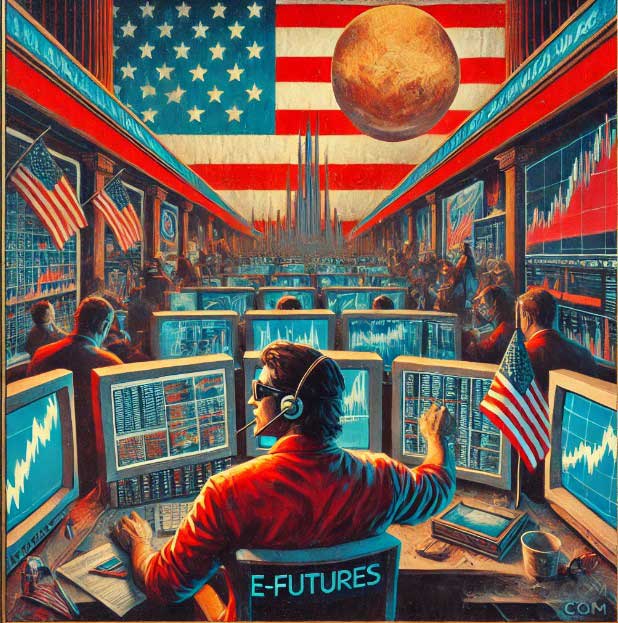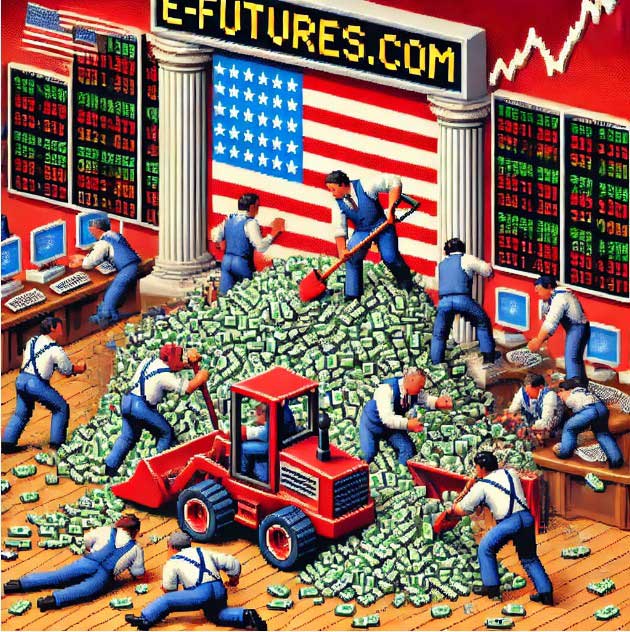When it comes to futures trading, selecting the best platform can make a significant difference in a trader’s overall experience, potential profitability, and ease of trading. The best futures trading platforms offer robust features, reliable performance, comprehensive support, and an easy-to-use interface. In this article, we will explore the qualities that define the best platforms for trading futures, review why E-Futures International, powered by E-Futures.com, excels as a premier futures trading platform, and explain why it’s a top choice for traders around the globe.
What Are the Top Qualities of the Best Futures Trading Platforms?
E-Futures International: A Standout Choice for Futures Trading
With over three decades in the business, E-Futures International stands out as a premier choice among the best futures trading platforms. Powered by E-Futures.com, this platform has been a trusted name in the industry since 1988. It boasts a stellar track record with regulatory bodies, top ratings on TrustPilot, and a history of providing excellent service to futures traders. Here’s a closer look at how E-Futures International embodies the qualities that define the best futures trading platforms.
- Advanced Analytical Tools and Charting on E-Futures International
E-Futures International offers a comprehensive suite of tools and charting options that enable traders to conduct in-depth analysis. The platform provides access to various technical indicators, drawing tools, and customizable charts, allowing traders to adapt their analysis based on specific strategies and market conditions. For those who rely heavily on technical analysis, the platform’s advanced charting capabilities make it one of the best platforms for trading futures, providing traders with a detailed view of the market and real-time data to support their decisions.
- Exceptional Speed and Reliability
In futures trading, milliseconds can make a difference, and E-Futures International has designed its platform to operate with high speed and reliability. Built with state-of-the-art technology, it delivers real-time data feeds, fast trade execution, and dependable infrastructure to ensure that traders do not miss out on crucial market movements. The platform’s robust performance places it among the best futures trading platforms, as it minimizes the risk of downtime and ensures seamless access to the markets.
- User-Friendly and Intuitive Interface
One of the reasons E-Futures International is regarded as one of the best platforms for trading futures is its user-friendly interface. Both novice and seasoned traders find it easy to navigate, with well-organized sections and quick access to essential features. The platform is designed to reduce the learning curve, so traders can quickly find the tools they need, execute trades, and manage their portfolios efficiently.
- Competitive and Transparent Fee Structure
E-Futures International understands the importance of keeping trading costs low. Its fee structure is competitive and transparent, with no hidden charges. Traders are provided with a clear breakdown of fees, ensuring that they know exactly what they are paying for each trade. This transparency in pricing makes E-Futures International one of the best futures trading platforms, as it prioritizes the interests of its clients and helps them manage costs effectively.
- Customizable Interface and Trading Options
E-Futures International allows traders to personalize their trading experience, offering options to customize the layout, set alerts, and create personalized watchlists. This level of customization is invaluable for traders who have specific strategies and requirements. By allowing flexibility and personalization, E-Futures International reinforces its position as one of the best platforms for trading futures, catering to the unique needs of each trader.
- Responsive and Knowledgeable Customer Support
Customer support is an area where E-Futures International truly excels. The platform offers 24/7 customer support via phone, email, and live chat, with knowledgeable representatives who can assist with everything from technical issues to account inquiries. This dedication to customer service is one of the reasons why E-Futures International receives top ratings on TrustPilot, making it a reliable and supportive option for traders. For those who value dependable support, E-Futures International is undoubtedly one of the best futures trading platforms in the industry.
- Access to Educational Resources
E-Futures International recognizes that informed traders are successful traders, which is why it offers an array of educational resources. These resources include webinars, tutorials, market analysis reports, and trading guides, all designed to help traders expand their knowledge and stay updated on the latest market trends. The availability of these resources contributes to its status as one of the best platforms for trading futures, as it empowers traders to continually develop their skills and strategies.
Why E-Futures International Is a Great Choice for Futures Trading
E-Futures International, powered by E-Futures.com, has been a leader in the futures trading industry since 1988. Its longstanding reputation and commitment to excellence are reflected in its high TrustPilot ratings and positive track record with regulatory bodies. Here are a few reasons why E-Futures International is a top choice among the best futures trading platforms:
- Proven Track Record
With over 30 years of experience in the industry, E-Futures International has earned the trust of thousands of traders. This longevity and the positive feedback from users make it one of the best futures trading platforms for those seeking a reliable and trustworthy trading partner. - Comprehensive Features for Every Trader
Whether a beginner or an advanced trader, E-Futures International provides a range of features to accommodate various trading styles. Its advanced tools, customizable interface, and educational resources make it an ideal platform for traders of all levels. - Trusted and Transparent
E-Futures International’s top ratings on TrustPilot and its strong standing with regulatory bodies reinforce its commitment to transparency and customer service. Traders can be assured of fair treatment, transparent fees, and high standards of compliance, further solidifying its position as one of the best platforms for trading futures. - Competitive Pricing for High-Volume Traders
For active traders, E-Futures International offers competitive pricing with volume-based discounts, reducing trading costs for those who trade frequently. This makes it one of the best futures trading platforms for high-volume traders who seek cost-effective solutions without compromising on quality. - Dedicated Support and Resources for Success
E-Futures International’s commitment to customer support and education stands out in the industry. Its knowledgeable support team and robust educational offerings provide traders with the tools and information they need to succeed, adding value and reinforcing its reputation as one of the best platforms for trading futures.
The best futures trading platforms are defined by a combination of speed, reliability, advanced tools, and excellent support. E-Futures International embodies all of these qualities, making it a standout choice among the best futures trading platforms. From its advanced analytical tools to its user-friendly interface, competitive pricing, and stellar customer support, E-Futures International, powered by E-Futures.com, is an excellent platform for traders seeking a reliable and comprehensive solution for futures trading.
With a strong reputation, top TrustPilot ratings, and a solid track record with regulatory bodies, E-Futures International has proven itself as one of the best platforms for trading futures. Whether you are an experienced trader or new to the world of futures, E-Futures International offers a secure, efficient, and supportive environment for successful trading.
To open an account with E-Futures.com, please click here.
Ready to start trading futures? Call US 1(800)454-9572 – Int’l (310)859-9572 email info@cannontrading.com and speak to one of our experienced, Series-3 licensed futures brokers and start your futures trading journey with E-Futures.com today.
Disclaimer – Trading Futures, Options on Futures, and retail off-exchange foreign currency transactions involves substantial risk of loss and is not suitable for all investors. Past performance is not indicative of future results. You should carefully consider whether trading is suitable for you in light of your circumstances, knowledge, and financial resources. You may lose all or more of your initial investment. Opinions, market data, and recommendations are subject to change at any time.
Important: Trading commodity futures and options involves a substantial risk of loss. The recommendations contained in this writing are of opinion only and do not guarantee any profits. This writing is for educational purposes. Past performances are not necessarily indicative of future results.
**This article has been generated with the help of AI Technology. It has been modified from the original draft for accuracy and compliance.
***@cannontrading on all socials.








